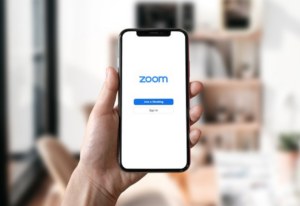 Zoom Introduces Post-Quantum End-to-End Encryption
Zoom Introduces Post-Quantum End-to-End Encryption
The security features of Zoom are getting a big boost. Post-quantum end-to-end encryption (E2EE) is now available in Zoom Meetings. This new encryption standard will soon be offered in Zoom Phone and Zoom Rooms.
End-to-end encryption scrambles the call’s content so that only the people involved can read it. Businesses that deal with private data during video conferences need this security feature.
Why Post-Quantum Encryption?
While traditional encryption methods are currently secure, the development of quantum computers raises concerns. Quantum computers operate on different principles than traditional computers and could theoretically break encryption codes used today.
This challenge is answered by post-quantum encryption. Even a powerful quantum computer would find it much harder to crack because it uses different mathematical principles than traditional encryption.
Protecting Against “Harvest Now, Decrypt Later” Attacks
Another reason for post-quantum encryption is to guard against “harvest now, decrypt later” attacks. In this scenario, attackers steal encrypted data today, knowing they can’t decrypt it yet. However, they hope to crack the code later with quantum computers.
Zoom aims to make this type of attack ineffective by using post-quantum encryption. Even if attackers capture encrypted data from a Zoom meeting, they couldn’t decrypt it in the future, even with a quantum computer.
What This Means for Zoom Users
The new post-quantum E2EE is currently available for Zoom Meetings. To benefit from this enhanced security, all participants in a meeting need to be using Zoom desktop or mobile app version 6.0.10 or higher. If some participants are using older versions, the meeting will default to the standard E2EE.
Zoom emphasizes that standard and post-quantum E2EE keep the encryption keys private from Zoom’s servers. This means Zoom itself cannot decrypt the content of your meetings.
Benefits for Businesses
Post-quantum encryption benefits businesses, especially those handling sensitive data online:
Enhanced security. Businesses can protect confidential communications and data from quantum computer threats by using post-quantum encryption.
Lower compliance risk. Many industries require strict data security rules. Post-quantum encryption helps businesses comply with regulations and avoid penalties by protecting data proactively.
Competitive advantage. Businesses that prioritize user privacy and security can gain a competitive edge. Offering post-quantum encryption as part of their video conferencing platform allows companies to position themselves as trustworthy partners.
Future-proofing communications. The development of quantum computing is still in its early stages, but the potential impact on encryption can’t be ignored. By adopting post-quantum encryption, businesses can ensure their video conferencing infrastructure remains secure.
The Future of Encryption
Quantum computers are still being developed, but the fact that Zoom is using post-quantum encryption is part of a larger trend in the tech world. Many businesses are taking similar steps to ensure their communications will be secure for years to come.


